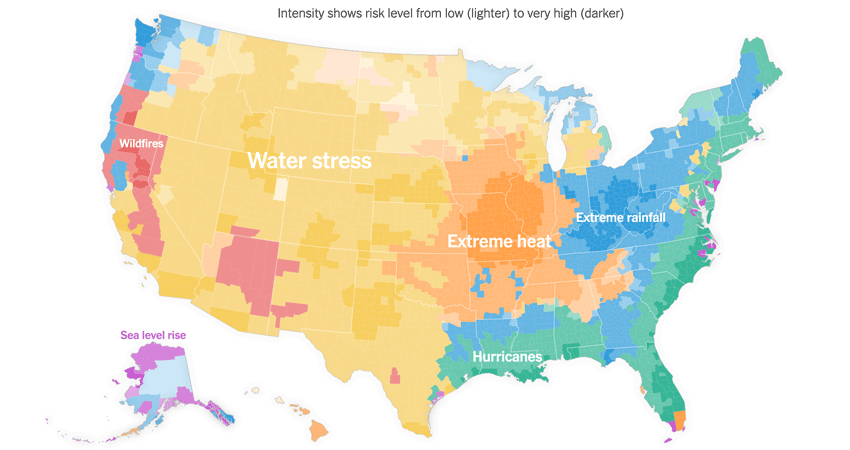By Hyon K. Rah, October 2020

Source: The New York Times. You can search for your county by typing in its name here.
To say that the year 2020 has been extraordinary would not be an understatement. For me, reflecting on the year to date from an environmental perspective has stirred up a sense of alarm and urgency I have never felt before.
It started in early July when I came across an announcement from NOAA (National Oceanic and Atmospheric Administration) that reported the U.S. already had ten (10) billion-dollar disasters in 2020 as of July 8th. Just to put that into perspective, the average number of billion-dollar disasters in the U.S. between 1980 and 2019 was 6.6 per year. The number about doubles, to 13.8 events per year, for the most recent five years (2015-2019). Then, this August, four (4) more billion-dollar disasters joined that list over a span of just one month: the derecho storm that hit the Midwest, Hurricanes Isaias and Laura, and the wildfires in California and Oregon.
These numbers tell us the frequency and severity of weather and climate-related disasters are rising rapidly. Depending on the location, common threats include wildfires, heat waves, hurricanes, extreme rainfall, sea level rise, and water stress. Each can wreak havoc in differently, and the impacts can be subtle and gradual or sudden and devastating. Either way, they can cause disruptions to our daily lives in ways large and small.
The image above maps the intensity of different types of climate-related threats for each county in the U.S. I urge you to take a look to get an idea of the types of threats (yes, there can be multiple) where you and your loves ones live.
Starting next month, I will take a deeper dive into the risks mentioned above, and how they could impact—or already have impacted—our daily lives. A number of you have reached out to me recently about water stress and infrastructure, so I will start there.
This article is a modified version of the original post on NFBPWC’s October Newsletter (pp 15-16).
